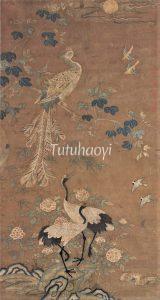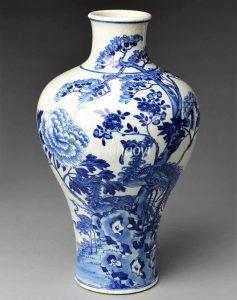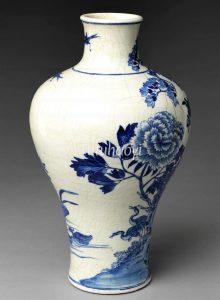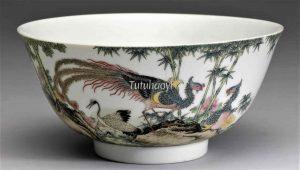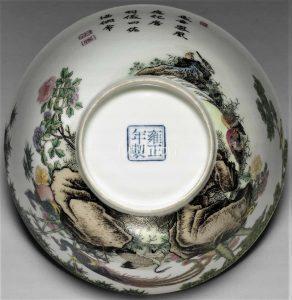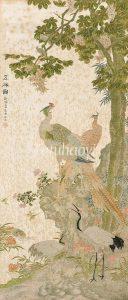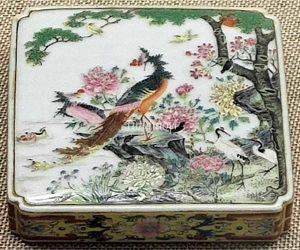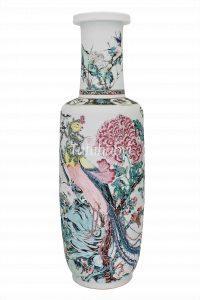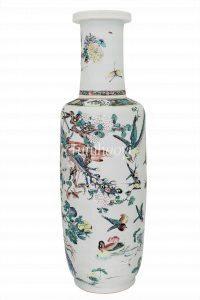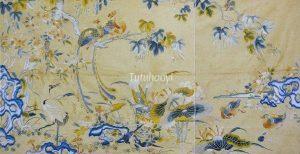Five Principal Human Relations
五伦图
© Tutuhaoyi.com owns the copyright of the description content for the images attached. Quoting all or part of the description content on this page is permitted ONLY IF ‘Tutuhaoyi.com’ is clearly acknowledged anywhere your quote is produced unless stated otherwise. (本页描述内容版权归Tutuhaoyi.com所有,转发或引用需注明 “Tutuhaoyi.com”, 侵权必究, 已注开源信息的条目除外。)
Image of the Five Principal Human Relations (Wu Lun Tu 五伦图), also known as Lun Xu Tu 伦叙图 (Epitome of Hierarchical Social Order), symbolises the five basic relationships in traditional Chinese society.
This design typically consists of five kinds of birds, the phoenixes 凤凰 symbolising the proper relationship between the emperor and his subjects, the cranes 仙鹤 symbolising that between the father and his sons, the mandarin ducks 鸳鸯 symbolising that between husband and wife, the wagtails 鶺鸰 symbolising that between brothers, and the orioles 黄莺 symbolising that between friends.
Fig 1: hanging scroll, colour on silk, Lun Xu Tu 伦叙图, Song dynasty (960–1279), courtesy of the National Palace Museum, Taipei
Fig 2-4: porcelain vase with underglaze blue decoration, early 18th century, courtesy of the Metropolitan Museum of Art, New York
Fig 5-6: porcelain bowl with overglaze enamelled decoration, Kangxi period (1662–1722), Qing dynasty, courtesy of the National Palace Museum, Taipei
Fig 7-8: porcelain bowl with overglaze enamelled decoration, Kangxi period (1662–1722), Qing dynasty, courtesy of the National Palace Museum, Taipei
Fig 9: silk tapestry, Wu Lun Tu 五伦图, Qing dynasty (1644–1911), courtesy of Yokohama international auction
Fig 10: porcelain square container with overglaze enamelled decoration, Qing dynasty (1644–1911), courtesy of Shanghai Museum, China
Fig 11-13: porcelain vase with overglaze enamelled decoration, Kangxi period (1662–1722), Qing dynasty, courtesy of the Jie Rui Tang Collection
Fig 14: silk tapestry, Daoguang period (1821–50), Qing dynasty, courtesy of the Beijing Art Museum
